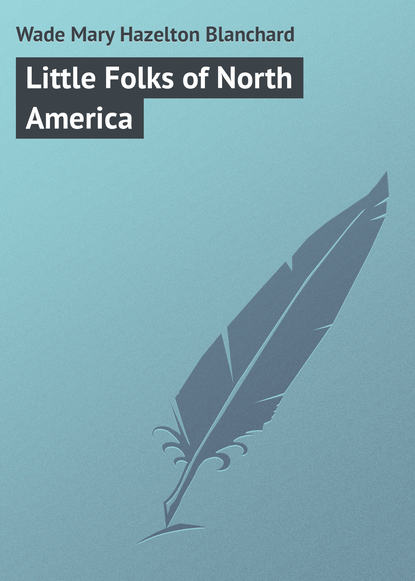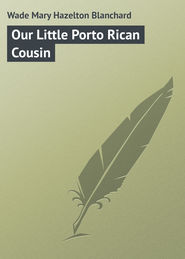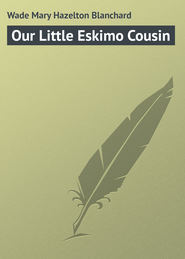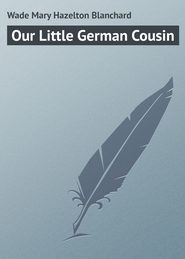По всем вопросам обращайтесь на: info@litportal.ru
(©) 2003-2024.
✖
Little Folks of North America
Настройки чтения
Размер шрифта
Высота строк
Поля
West of Ireland is the largest island in the world. It is called Greenland, but the boys and girls who live there have little reason to know it by such a name, for it is a country of snow and ice where fierce winds are blowing the greater part of the year and where the frost king rules even in the summer-time.
Long ago there were brave sailors in northern Europe called Norsemen, who ventured out into the western waters farther than any other known people at that time. Some of them, as you know, sailed as far as Iceland where they settled and made a home for themselves.
By and by one of these settlers sailed still farther into the west. Fierce storms arose and strong winds blew his ship till he came in sight of a land whose shores were bound in ice. At last the storm passed; then he turned his ship about and sailed for home.
When he reached Iceland he told of what he had seen. Among those who listened to him was another daring sailor, Eric the Red.
Not long afterwards Eric the Red killed another man in a quarrel, and on account of this wrong deed he was told that he could not stay in Iceland, but must leave his home for two years at least.
He now thought of the story he had heard of a land farther west. He said to himself, “I will seek that country and perhaps I will find a home there to my liking.”
He set out with a brave heart and sailed on till at last he saw before him a bare and desolate land. He steered his ship past great icebergs and floating masses of ice and entered a harbor.
It was not a pleasant country in which to make a home. There was no person to greet him; not a single tree to offer its shade. Yet he made himself as comfortable as possible and built a house of stone against the side of a steep cliff. He fished in the icy waters and hunted over the snow-covered fields; thus he and his few companions got enough food to keep themselves from starving.
Two winters passed in this new home and Eric the Red, who had been used to hardship, enjoyed himself because he was free to do as he pleased and there were no enemies to disturb him. In fact, all the time he and his followers were in Greenland they met no other people, and so they believed they were the only ones living in that ice-bound country. In their wanderings, however, they discovered that there were many high mountains, deep and narrow bays, and glaciers.
The time came when Eric the Red could go back to Iceland. On his return he said to himself, “I will say that I found a pleasant home in the west. I will give the place the pleasant name of Greenland. Then some of the people will wish to go back with me and settle there.”
Eric the Red painted such a delightful picture of his stay in the distant land that a goodly company started out with him in twenty-five ships when he returned to Greenland. Some of these ships were wrecked; others were driven back by fierce winds. Fourteen, however, managed to pass the dangerous icebergs and the great masses of floating ice and entered a narrow harbor.
The people landed on the desolate shore and were soon busy building houses in which to live. There was no lumber because there were no trees, so they had to use stones.
Afterwards small gardens were dug and planted. Sheds were built of stone where the sheep and oxen the people had brought with them could be protected from the biting cold of the long winter and the fearful storms that raged there.
Other settlers followed the first ones and made new homes for themselves on the western coast of Greenland, not far from the place chosen by the first-comers. Here, in rough stone houses, little children were born and grew up to be men and women.
These children did not know the taste of bread. They lived mostly on the meat of seals, walruses, and reindeer, the berries they picked in summer, and the eggs of the wild birds that flew in great flocks over the country when the long, cold winter was over.
They had many a good time, though. They romped in the frosty air; they slid on the ice; they petted their lambs and played games; and then, when evening came, they gathered about their fathers to listen to wonderful tales of adventures with wild animals and of fights for life among icebergs and glaciers. Often they must have held their breath, and their blood must have been stirred as they thought, “Soon we will grow up and we, too, will dare what our fathers have dared.”
The Eskimos
More than three hundred years passed by. Then the children of the settlers suddenly discovered that they were not the only ones living in Greenland. Not far to the north there were other boys and girls with yellow skins, black eyes, round faces and mouths ever ready to stretch in smiles. Far different, indeed, they looked from the Norse children with their fair hair and blue eyes.
These little strangers spoke an odd-sounding language and when they pointed to themselves they said, “Innuits,” meaning “people.” No doubt they and their parents had thought themselves the only people in the world. The Norsemen called them Skrællings; but long afterwards, when other white men came to Greenland and noticed the manner of living of the natives, they gave them the name of Eskimos which means, “Eaters of raw meat.” To this day we know them as Eskimos.
Not long after they met with the Eskimos the white settlers, with their wives and children, disappeared from Greenland. No one knows the reason. Perhaps they all died from a terrible sickness that visited them at that time. There are some who think they were killed by the natives. At any rate, there were no more white people in Greenland for two hundred years and the little Eskimos lived on as they always had done.
The homes of these children are built to-day just as they were in that far-away time when the Norsemen first saw them. They spend the long cold winter in stone huts. The stones are packed closely together and the chinks are stuffed so tightly with turf that the sharpest wind can not make its way inside. A low passage into the house is also built of stones, but it is so low that even the little children must crawl on their hands and knees when they go in and out of the house.
Can you think of the reason for this? It is because the wind must be kept out of the home at all costs.
When the children have once crept inside, there is not much room over their heads even now, since the house-walls themselves are not more than six or eight feet high. The light is very dim, for the small windows are made of the bowels of seals, as the Eskimos do not have the glass we think so necessary; so they take the best thing they can procure.
A little more light is given by queer, smoky lamps which are stoves as well. Women are busy tending these all the time, or they would smoke so badly that even the Eskimos, who are used to them, could not breathe the air without choking.
Each one of these stove-lamps is made of a piece of sandstone hollowed out somewhat in the shape of a dustpan. Pieces of blubber are placed in the bottom and strips of dried moss are set up along one side for wicks. Here the mothers of the Eskimo children do all their cooking, and here the boys and girls must gather when they wish to warm their fingers if Jack Frost has pinched them.
Heavy seal or bear skins which have been cured and made ready for use hang down from the walls, making them doubly warm.
Along the sides of the hut are platforms where the children sit with their parents and where they stretch themselves among piles of furs for the night’s rest. These platforms are usually made of wood, one of the most precious things the Eskimos possess. Since no trees grow in Greenland, the only wood the people had in the long ago drifted to their shores. Often it came from the wrecks of vessels that ventured into the dangerous northern waters after whales. Now-a-days, however, the Eskimos get lumber from white traders in exchange for oil and furs. For about four months of the winter the sun does not show his face at all. The children must be very glad that during that period the moon shines brightly one week out of every four. That is the time for the best fun, – skating and coasting by moonlight when the snowfields and the ice-bound shores glisten like the most wonderful fairyland you can possibly imagine.
Before they venture from their homes their loving mothers see that they put on their bird-skin shirts with the soft feathers worn next to the skin. Then there are stockings of hare or dog skin, and high boots of sealskin.
It would be rather hard at first for you to tell an Eskimo girl from a boy for all the people of the snowland wear trousers which are, of course, much warmer than skirts would be. These trousers, like the boots, are made of heavy skins with the fur on the inside.
The upper part of the body is covered with a short fur blouse. A fur hood and mittens complete the outdoor dress. No suit could be better for traveling over the snow or playing on the icy hillsides than the Greenland mothers make for their little ones.
Hunting for Food
Sometimes the little Eskimos and their parents feast nearly all day long. This is when their fathers have been successful in the hunt and there is plenty of seal and walrus meat on hand. But there are other times when many hours pass by without food and they do not know how much longer they must wait before they can satisfy their hunger.
Sometimes the men are away from home for days together, searching the shore for the food their wives and little ones need so much. When at last they have been successful and returned with their loads, the children run out with their mothers to meet the hunters and take care of the precious prize. The women are armed with long knives with which they quickly cut away the skins. The meat is cut up, and with shouts of laughter the children crawl through the narrow passage into the hut and gather around their mothers, as pieces of the meat are placed in stone dishes and hung over the lamps to cook.
It may be, that while the children sit eagerly watching for some seal-blood soup to be prepared, the women throw them pieces of blubber which they eat greedily.
All this time the men are stretched about on the low platforms, joking and telling stories while they wait for the feast to begin. As they wait, some of them busy their fingers carving toys out of walrus-teeth for the children, – tiny reindeer, seals, sledges, birds or muskoxen.
When the dinner is ready a large dish of food is placed in the middle of the floor, the big folks and little sit around in a circle and help themselves with their fingers. After dinner come songs and dances in which the children take their part.
It is very likely that over on a low shelf a mother dog is lying with her puppies, and the children go to her from time to time and play with their cunning little pets. The Eskimos are fond of their dogs, and are very careful of the puppies, which are brought up in the house with their own children from the time when they are born till they are big enough to take care of themselves.
Eskimo Dogs
The boys and girls of the far north would be very lonely without their trusty dogs. They play with the puppies during the long winter days. Then, as soon as their little pets are old enough, the boys begin to train them. First, the animal must be taught to obey their young masters. Then collars are made, and with long straps of leather, these are fastened to low sledges made of drift wood and walrus lines. The sledge is drawn by a number of dogs, each of which is fastened by a separate strap.
When the master of the pack is ready for a ride, he throws himself upon the sledge, cracks his whip, and the dogs start wildly off with leaps and bounds.
On goes the sledge, now over a smooth sheet of frozen snow, and again bumping up and down as the dogs dash over rough hillocks of ice. It is enough to take one’s breath away.
An Eskimo boy is much pleased when his father tells him he is getting old enough to have a team of dogs for his very own. He picks out the brightest and smartest one of his puppies to be the leader of the new pack and trains him with the greatest care. The young dog in his turn seems proud of the honor paid him and soon begins to rule among his fellows like a king.
Poor Eskimo dogs! They have a hard lot. All through the long winter they are seldom fed more than three or four times a week. Only the mother dogs with their puppies are allowed in the house. The rest of the pack spend most of the time outdoors although they are sometimes allowed in the passageway, or a snow hut is built for them near the house of their master. Their hair, however, is long and thick and warm, and this protects them from the winds and storm. They will stretch out on a bed of snow and sleep comfortably hour after hour in the coldest weather. One of their favorite resting places is the top of their master’s hut; but when the wind blows hard they prefer to creep into their snow house and stay there till the weather is once more calm.
As soon as the Eskimo boy is old enough to hold a tiny bow his parents put one in his chubby hands. He is so pleased when he is able to set an arrow and send it speeding against a mark on the wall of the hut. When he strikes it for the first time the place rings with his shouts of delight. When he is a little older he takes lessons from his father in shaping harpoons and spearheads. He is now getting ready for the hunting that is to be his work in life.
While he is learning the ways of a hunter, his sister also has her lessons. Her mother and grandmother are busy women, tanning the skins the men bring in, and making them into warm garments for the family. The girls must therefore learn to sew with coarse bone needles and heavy thread made from the sinews of the reindeer. They must also help in chewing skin with their strong white teeth. This is to make the skin soft and comfortable for the wearer, but it is a long, hard task. Many an Eskimo woman wears her teeth down to stubs by the time she is an old woman.
After Seals.
When autumn sets in, the head of the family watches the ice in the bay. As soon as it is frozen hard enough, he will begin his hunt for seals. He clothes himself in fur from head to foot, takes his lance from the wall, and hangs over one arm a little stool made of small pieces of wood bound together with leather straps. He must not forget his hunting knife, nor a fur blanket which he throws over his shoulders. At last he is off. He walks quickly down to the edge of the bay and looks keenly about over its surface. Perhaps he decides to follow the coast for some distance, as farther along the ice seems firmer.
On he moves till he comes to a place where he can trust himself. With leaps and bounds he springs from one cake of ice to another till he reaches a place where the water of the outer bay is frozen solid. He keeps his eyes fastened on the ice. Ah! he has discovered a small hole. He thinks, “Now I have found the home of a family of seals. This is certainly their breathing place.”
He spreads his fur blanket on the ice close to the hole. In the middle of it he puts his stool, and then, with lance in hand, he sits down to watch and wait.
It may be that in a short time a seal’s nose will appear at this hole to get a breath of fresh air, or perhaps hours will pass before this happens.











